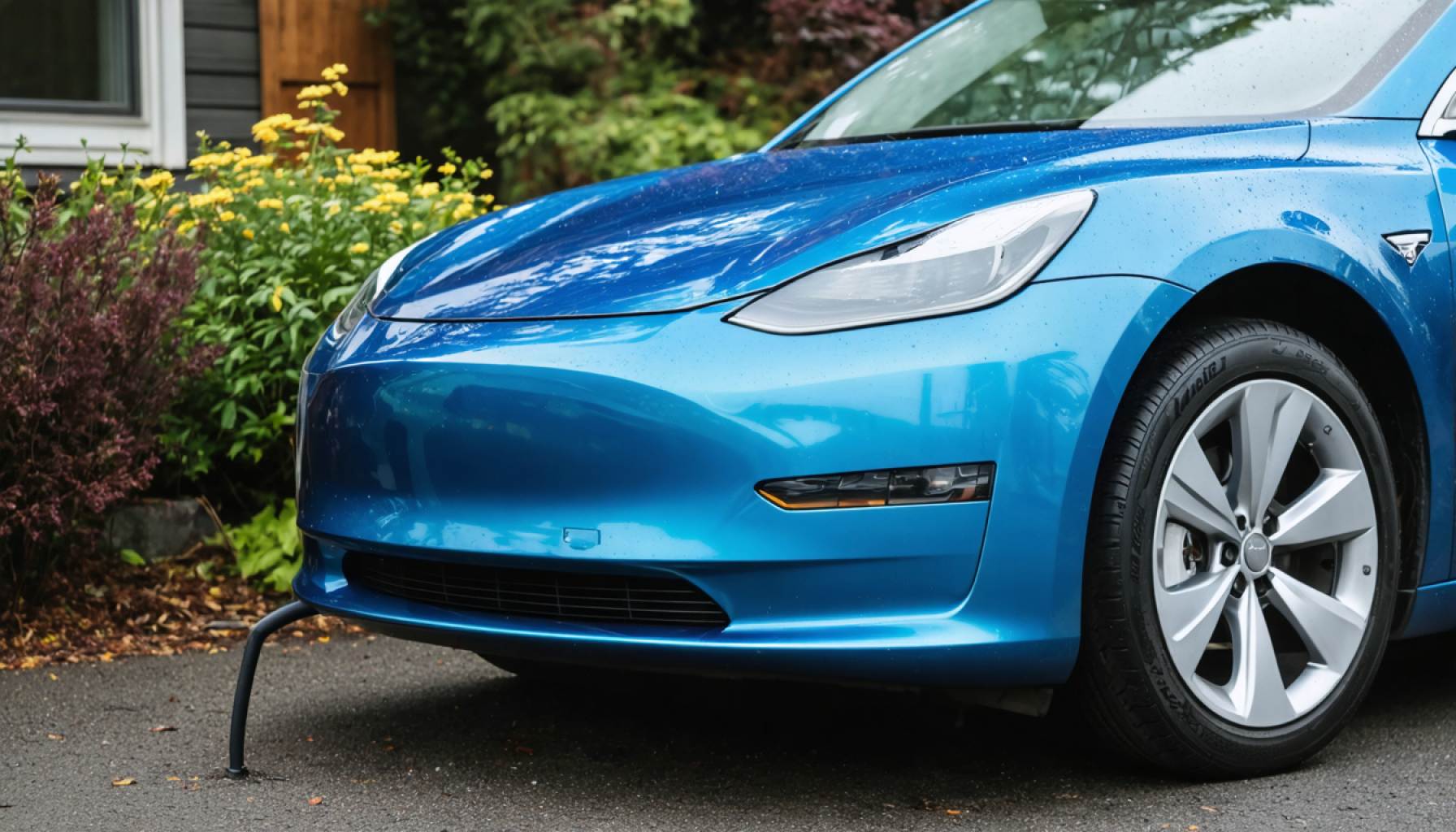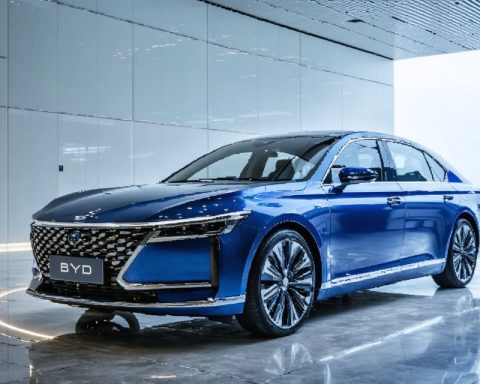- Oregon faces financial challenges despite having over 100,000 registered electric vehicles, creating a $1.8 billion shortfall in transportation funding.
- The rise of electric vehicles reduces gas tax revenues, the state’s primary road-funding mechanism, as electric cars pay less in road-use taxes compared to traditional vehicles.
- The OReGO program offers a per-mile fee system as an alternative funding solution, but adoption remains low with less than a thousand participants.
- Bruce Starr’s foresight led to the creation of OReGO, anticipating fiscal challenges as fuel types diversified over two decades ago.
- Policymakers aim to find a balance between advancing green technology and ensuring sustainable infrastructure funding.
- Tim Martinez and other advocates for OReGO emphasize its potential for expanded integration and precise monitoring.
- Oregon’s situation underscores the broader challenge of aligning technological progress with economic and infrastructure realities.
Oregon stands at a crossroads, a blend of triumph and challenge, where progress flashes its dazzling lights in the guise of over 100,000 registered electric vehicles. While this achievement sparks hope in the quest for a greener future, it concurrently casts shadows over the state’s transportation funding. The electric vehicle boom accelerates Oregon toward its climate objectives yet drives it into a financial quagmire, burdened by a $1.8 billion shortfall necessitated by infrastructure demands and fickle fuel tax revenues.
The jubilee over electric cars comes with the realization that these eco-friendly marvels elude the state’s primary road-funding mechanism: the gas tax. Despite higher title and registration fees for electric vehicles, the contributions fall short compared to the taxes wrung from their gasoline-powered counterparts. Oregon has sought to remedy this imbalance through innovative measures like the OReGO program — a per-mile fee system offering an alternative route to equitable contribution. Yet, its uptake languishes, embraced by fewer than a thousand pioneers.
The journey to these unchartered roads began over two decades ago, when Bruce Starr, then chairing the state’s transportation committee, envisioned a future of fuel diversification. Confronted by hydrogen-powered vehicles in the early 2000s, he foresaw the fiscal turbulence now striking Oregon. This foresight birthed the task force leading to the OReGO experiment, allowing participants to track miles via cutting-edge technology, ensuring they pay fairly for the roadways they traverse.
Here lies the heart of the conundrum: how to fairly sustain infrastructure amidst an ever-accelerating green transition. Enthusiasts like Tim Martinez, who align with companies steering OReGO, advocate for its expansion. They extol the program’s seamless integration of public and private efforts, monitoring every mile with precision while honoring the greener miles of tomorrow.
At its core, Oregon’s challenge mirrors a universal quest: to reconcile technology’s promise with economic reality. As electric vehicles glide silently past gas stations, the state’s policymakers must carve a sustainable path. The solution beckons not merely as a financial necessity but as a blueprint for fiscal stewardship in an electrified age.
Unveiling Oregon’s EV Dilemma: Funding Roads and Embracing Innovation
Oregon’s Electric Vehicle Landscape: Current Challenges and Prospects
Oregon stands as a leader in the adoption of electric vehicles (EVs), boasting over 100,000 registered electric vehicles. This surge propels the state closer to its climate goals but simultaneously presents significant challenges in infrastructure funding, predominantly due to declining revenues from gas taxes.
Why the Gas Tax Model Falls Short
The primary funding for Oregon’s transportation infrastructure traditionally comes from gas taxes. However, as more residents switch to electric vehicles, these revenues decrease, contributing to a $1.8 billion shortfall. Recognizing this issue, Oregon has raised title and registration fees for EVs, but these measures don’t fully compensate for the loss.
Innovating with OReGO: A New Approach
To address this funding gap, Oregon introduced the OReGO program, which charges drivers based on the miles they drive rather than fuel consumption. This initiative aims to distribute the cost of road maintenance more equitably among all vehicle owners.
How the OReGO Program Works
1. Enrollment and Technology: Participants attach a GPS-enabled device to their vehicle to track mileage. This data is used to calculate road use fees.
2. Paying Per Mile: Drivers in the program pay a fee for each mile driven, offsetting some of the gas taxes they would have paid otherwise.
3. Voluntary Participation: Currently, the program is voluntary and has less than 1,000 participants. Education and incentives may expand its reach.
Addressing Pressing Questions
What Are the Benefits and Drawbacks of OReGO?
Pros:
– Equitable payment systems based on actual road usage.
– Potential to generate stable funding for infrastructure.
– Reduces financial discrimination against EV owners.
Cons:
– Privacy concerns over tracking vehicle movements.
– Technological barriers for widespread adoption.
– Current low participation rates limit financial impact.
How Does Oregon Compare Nationally?
Oregon is a pioneer in road usage charge programs, but other states are watching closely. Success in Oregon could pave the way for similar systems across the U.S., revolutionizing transportation funding.
Industry Trends and Future Predictions
Electric Vehicle Market Growth: The EV market is expected to grow significantly, driven by policy incentives and technological advancements.
Infrastructure Adaptations: States must innovate funding solutions as they transition from fossil fuels. This trend will likely continue as more vehicles become autonomous and electric.
Real-World Use Cases
– Urban Commutes: EVs are ideal for urban residents with short commutes, benefiting from lower operating costs and reduced environmental impact.
– Rural Accessibility: Programs like OReGO could be adjusted to offer incentives for rural drivers, addressing disparities in driving conditions and distances.
Actionable Recommendations
1. Increase Participation in OReGO: Launch education campaigns to inform the public about the benefits of the program.
2. Enhance Technological Solutions: Develop user-friendly systems ensuring privacy to increase public trust in mileage tracking.
3. Policy Adjustments: Consider mandatory participation for future-proofing infrastructure funding as EV adoption grows.
For a deeper dive into transportation innovation, visit Oregon’s official site.
Conclusion
Oregon’s journey with electric vehicles highlights the need for adaptive policy solutions to meet infrastructure funding challenges. Programs like OReGO, when improved and widely adopted, can serve as viable models for sustainable economic stewardship in the era of electrification. By balancing innovation with practical fiscal strategies, Oregon can lead the charge towards a cleaner, economically sustainable future.













